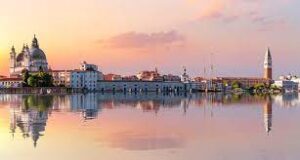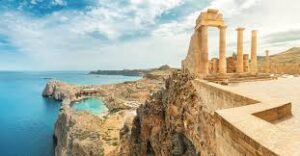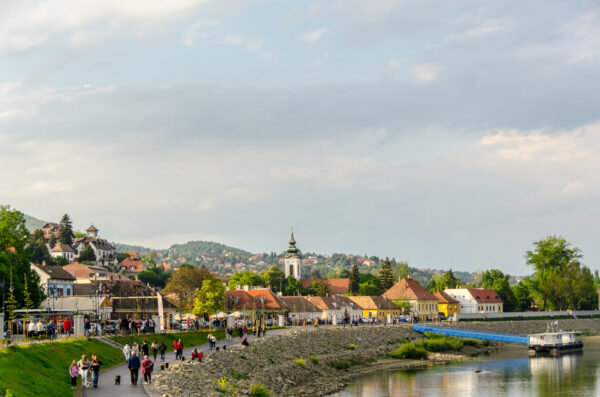Welcome to a riveting journey into the heart of Europe, a voyage navigated by the threads of its rich and diverse heritage. Each thread tells a unique story, together forming the intricate mosaic that is the cultural tapestry of Europe. From prehistoric relics to grand medieval castles, classical marvels to modern artistic expressions, Europe’s heritage enchants, educates, and elevates. This exploration aims to deepen our understanding of the weight of European heritage, its profound impact on shaping the continent’s cultural identity, and its enduring influence on the global stage. Be ready to embark on this journey, to unveil, explore, comprehend, and ultimately, engage with the rich heritage that forms the essence of Europe’s identity.
The Significance of European Heritage


European heritage is not merely a collection of historical remnants; it is an active part of everyday life, contributing to the identities of its people and shaping societal norms and values. From language and traditions to customs and the arts, heritage informs and infuses the fabric of European societies.
Europe is known as a treasure trove of diverse and interconnected heritages, each with its unique character and narrative. This diversity, from the Nordic fjords to the Mediterranean shores, from the Western Atlantic edges to the Eastern steppes, forms a rich tapestry that speaks volumes about human civilization’s journey. Eastern European heritage, enriched by Byzantine, Ottoman, and Slavic influences, paints a vibrant picture of a region steeped in history and culture.
Furthermore, European heritage has had a substantial global impact, particularly in the realms of art, architecture, literature, and philosophy. It is not confined within Europe’s borders, as its influences have permeated societies worldwide, shaping thought, aesthetics, and practices in countless ways. This influence ranges from the architectural styles of Greek and Roman antiquity, the philosophical ideas birthed in the Enlightenment, to the artistic revolutions of the Renaissance and Baroque periods. In these and countless other ways, the impact of European heritage extends far beyond the continent itself.
Unveiling Europe’s Cultural Tapestry
Delving into the historical journey of Europe is like traversing through time, discovering the layers that collectively form its rich heritage. Each period, each era has left indelible imprints that continue to shape the continent’s identity.
Europe is one of the most popular travel destinations. But next year new travel regulations are going to change some things. Launching in 2025, ETIAS will bring more flexibility and comfort to the traveler experience thanks to the highly developed pre-arrival verification system and reduced waiting time at the EU border. Welcome to the new age, where visiting Europe with just a biometric passport and a pre-issued digital travel permit is a reality.
Ancient Heritage: Tracing Europe’s Prehistoric Roots


Prominent among these remnants are Stonehenge in England, the Dolmens scattered across the continent, and the many megalithic cultures that flourished in prehistoric Europe. These structures, constructed thousands of years ago, continue to inspire awe and curiosity. Their mysteries, like the people who built them and the reasons behind their construction, stir our imagination, and their impressive preservation underscores the deep roots of European civilization.
Classical Heritage: From Greece to Rome
Moving forward in time, the classical period of ancient Greece and Rome represents a critical chapter in Europe’s heritage. This era saw the rise of mighty city-states and empires, the birth of democracy, significant advancements in science and philosophy, and the creation of artistic and architectural marvels. Delving into European heritage history is like embarking on a journey through time, exploring how each era has shaped the continent’s cultural identity.
The ancient Greeks gifted the world with pioneering philosophical thoughts, stunning architectural styles, and enduring myths and legends. From the grandeur of the Parthenon to the philosophical teachings of Socrates, Plato, and Aristotle, the influence of ancient Greece is undeniable. Among the renowned European heritage sites are the Acropolis in Greece, Stonehenge in England, and the Palace of Versailles in France.
Similarly, the heritage of ancient Rome, marked by its powerful empire and architectural wonders such as the Colosseum, Pantheon, and Roman aqueducts, continues to shape Europe. Beyond architecture, Rome’s impact extends to legal systems, language, and administrative structures, many of which form the basis of modern Western societies.
Medieval Heritage: Castles, Cathedrals, and Chivalry
The medieval period, often referred to as the Middle Ages, was a time of significant change and development in Europe. The era witnessed the construction of imposing castles and fortresses, signifying feudal power and serving as crucial defensive structures. Today, these castles stand as enduring symbols of the past, evoking images of knights, nobility, and historical battles.
Religion played a central role during this period, as reflected in the grand Gothic cathedrals that dot the European landscape. These architectural wonders, with their towering spires, intricate sculptures, and stained-glass windows, were more than places of worship; they were expressions of faith, wealth, and power.
Renaissance and Baroque Heritage: The Golden Age of Europe


Artists like Michelangelo, Leonardo da Vinci, and Raphael, among others, created works that continue to inspire. The influence of the Renaissance wasn’t limited to the arts; it also sparked transformations in science, politics, and religion, thus shaping the modern world.
Following the Renaissance, the Baroque period emerged with its distinct style characterized by elaborate details, drama, and grandeur. This period produced magnificent architectural structures and significant developments in music and the arts, further enriching Europe’s cultural heritage.
Enlightenment Heritage: The Age of Reason
The Enlightenment, also known as the Age of Reason, was a period marked by a surge in intellectual and philosophical advancements. Enlightened thinkers such as Voltaire, John Locke, and Jean-Jacques Rousseau championed reason, individualism, and secularism, questioning traditional authority and embracing scientific thought.
The ideas birthed during this period have profoundly influenced modern political and social structures. They laid the groundwork for democratic governance, human rights, and free-market economics. The enlightenment period, with its emphasis on reason and progress, significantly contributes to Europe’s intellectual heritage.
Cultural Routes and World Heritage Sites
Heritage is not merely about the past; it’s also about how we engage with it in the present. One engaging way to explore Europe’s heritage is by following its cultural routes and visiting its World Heritage Sites.
As mentioned above, ETIAS is going to change the way people travel around Europe. Completing the ETIAS application will take you no more than 15 minutes, and once submitted, you’ll get your application feedback within hours.
Exploring Europe’s Cultural Routes
The European Cultural Routes program, an initiative by the Council of Europe, offers a unique way to explore the continent’s diverse heritage. These routes trace thematic paths across different regions, connecting sites of historical and cultural importance. They cover a wide array of topics, from ancient trade routes and pilgrimage trails to routes dedicated to specific historical figures or events.
Following these cultural routes provides an immersive experience, allowing travelers to understand the interconnectedness of Europe’s heritage and its shared history, while also appreciating its diversity.
UNESCO World Heritage Sites in Europe


These sites, ranging from ancient ruins, historic city centers, to breathtaking natural landscapes, tell unique stories about human civilization and the natural world. Exploring these sites offers invaluable insights into Europe’s past and the development of its civilizations, thus forming an integral part of any exploration of European heritage.
Contemporary Expressions of European Heritage
While much of Europe’s heritage is rooted in its past, it continues to evolve and find new expressions in the present. Contemporary European heritage is a vibrant blend of traditional and modern elements, visible in its arts, literature, and various cultural events.
Modern European Art and Literature
Modern European art and literature are significantly influenced by the continent’s rich historical legacy. Today’s artists and writers reinterpret traditional themes through contemporary lenses, thereby adding new layers to the ever-evolving European cultural tapestry.
This continued dialogue between the past and the present in European art and literature highlights the dynamic nature of heritage. It underscores the idea that while heritage is deeply rooted in history, it’s not static; it evolves, adapts, and finds new expressions, thereby staying relevant.
European Heritage Festivals and Events
European heritage comes to life through various festivals and events celebrated across the continent. These celebrations, steeped in tradition, bring history to the present, offering locals and visitors alike a chance to experience Europe’s cultural richness firsthand.
From traditional music and dance festivals, historical reenactments, to unique customs and rituals, these events are vibrant expressions of European heritage. They provide a platform for communities to showcase their cultural heritage and strengthen their identities, while also promoting intercultural dialogue and understanding.
As we reach the end of this journey through Europe’s heritage, it’s important to remember that this is but a glimpse of the continent’s immense cultural richness. Europe’s heritage is vast and varied, a tapestry woven with countless threads, each with its own story. By engaging with this heritage, we not only gain insights into Europe’s past but also understand its present and shape its future. In this way, heritage serves as a bridge, linking us to our past and guiding us towards our future.
